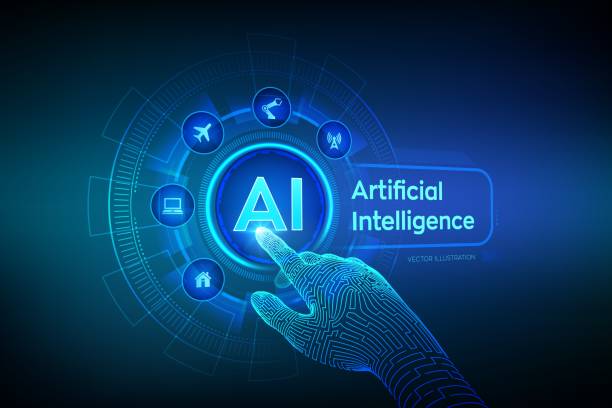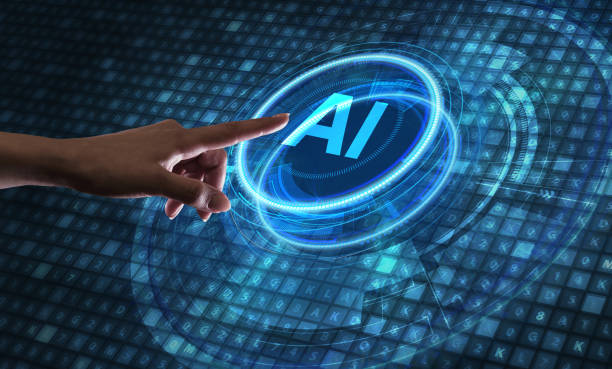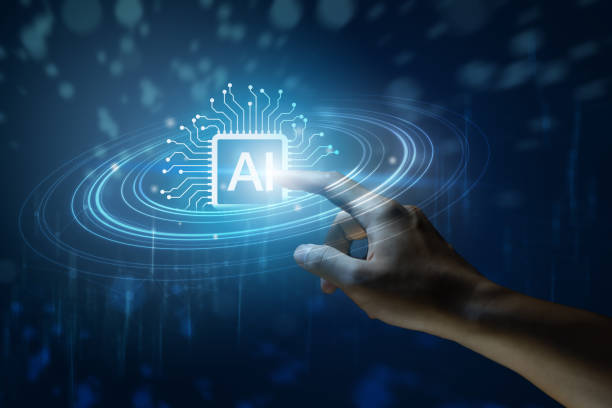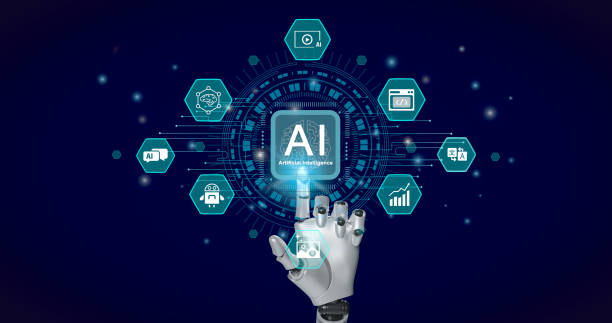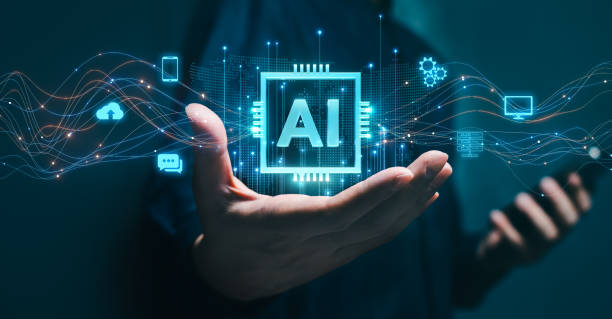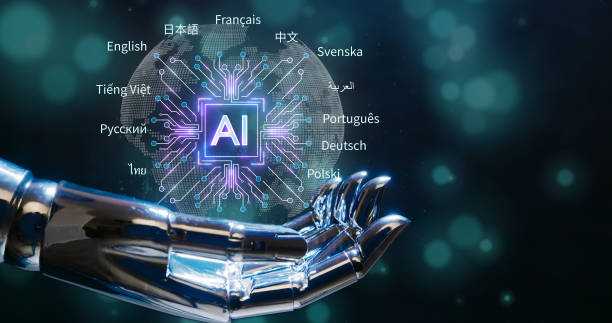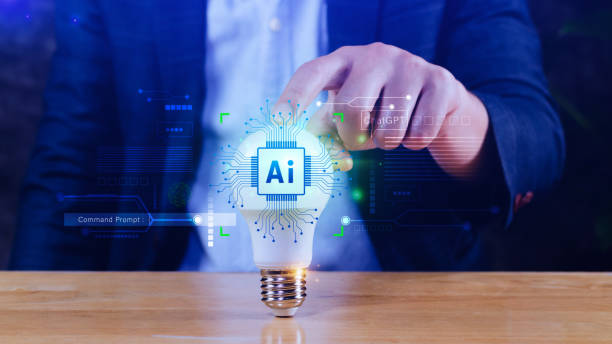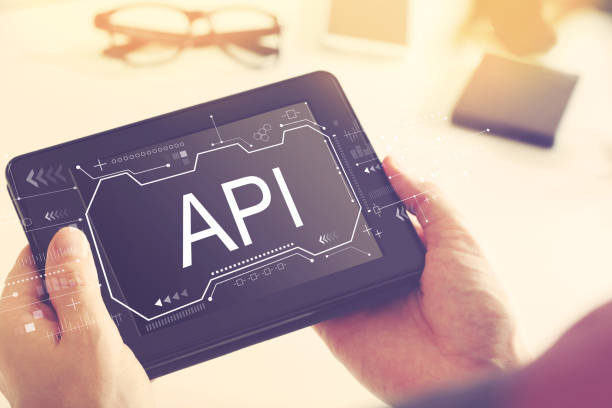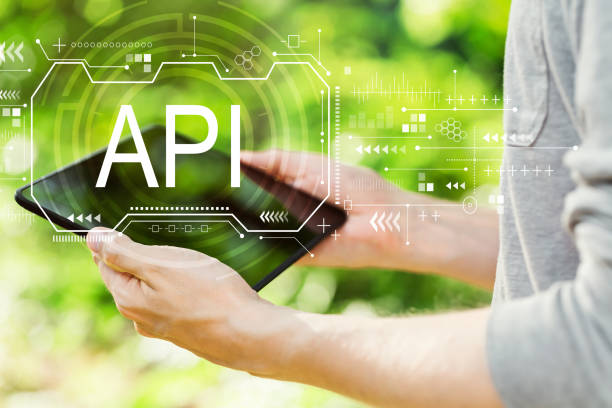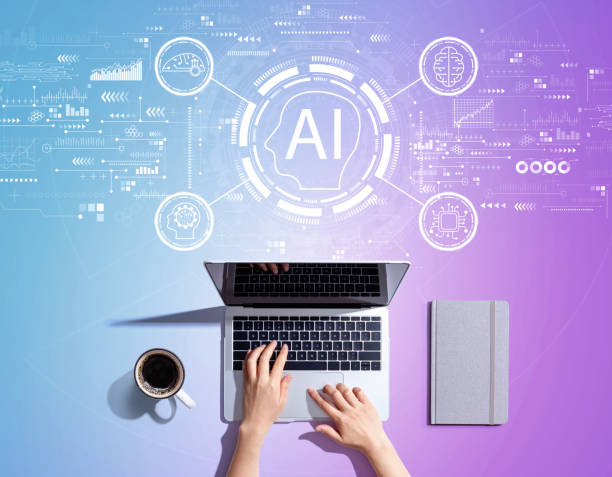What is an Artificial Intelligence Robot and How Does It Work?
An artificial intelligence robot is a combination of two key concepts: robotics and #artificial_intelligence.
In short, an AI robot is a physical machine that uses artificial intelligence algorithms to perform tasks that usually require human intelligence.
These tasks can include learning, reasoning, problem-solving, natural language understanding, and even creativity.
An AI robot uses sensors to collect information from its surrounding environment.
This information is then processed by processors and artificial intelligence algorithms so that the robot can make decisions and take appropriate action.
The algorithms used in AI robots can be very diverse, from simple machine learning algorithms to complex neural networks.
For example, an AI robot designed to clean a house uses sensors to detect obstacles and dust.
It then uses artificial intelligence algorithms to optimize its path and automatically clean the house.
An AI robot in a factory production line can use machine vision to detect defective parts and remove them from the production line.
AI robots with diverse capabilities have wide applications in various industries.
Recent advances in the field of artificial intelligence and robotics have made AI robots more complex and efficient, playing a more important role in our lives.
Does your current website create the trust that potential customers should have in your business? If the answer is no, it’s time to have a professional and impactful corporate website with Rasaweb.
✅ Completely custom design tailored to your brand identity
✅ Increase lead generation and credibility of your business in the eyes of customers⚡ Contact us for free consultation!
Main Components of an AI Robot
An AI robot consists of several main parts, each of which plays an important role in its operation.
These components include:
-
Sensors Sensors collect information from the surrounding environment.
This information can include images, sound, temperature, pressure, and so on.
There are different types of sensors that are selected depending on the application of the robot. -
Processors Processors process the information collected by the sensors and make the necessary decisions.
Processors must have enough processing power to run artificial intelligence algorithms. -
Motors and Actuators Motors and actuators perform the robot’s physical movements and actions.
These components can include electric motors, hydraulic pumps, robotic arms, and so on. -
Artificial Intelligence Algorithms Artificial intelligence algorithms allow the robot to learn, reason, and make decisions.
These algorithms can include machine learning, neural networks, and so on. -
Power Supply The power supply provides the energy needed for the robot to operate.
This source can include batteries, solar cells, or connection to mains electricity.
Click here to preview your posts with PRO themes ››
The interaction between these components allows the AI robot to perform complex and diverse tasks.
The appropriate selection of each of these components depends on the specific application of the robot.
Types of AI Robots and Their Applications
AI robots are designed and built in various types, each of which is suitable for specific applications.
Some common types of AI robots include:
-
Industrial Robots These robots are used in factory production lines to perform repetitive and precise tasks.
Industrial robots can assemble parts, perform welding, painting, and so on. -
Service Robots These robots are designed to provide services to humans.
Service robots can be used in hospitals, hotels, restaurants, and homes.
They can perform tasks such as cleaning, transportation, food delivery, order taking, and so on. -
Military Robots These robots are used in military operations to perform dangerous and difficult tasks.
Military robots can be used as scouts, mine sweepers, or for transporting equipment. -
Medical Robots These robots are used in surgery, disease diagnosis, and rehabilitation.
Medical robots can increase surgical accuracy, reduce recovery time, and help patients perform rehabilitation exercises. -
Space Robots These robots are used for space exploration and scientific research.
Space robots can take samples of soil and rocks, send images and data to Earth, and repair equipment.
The applications of AI robots are constantly expanding, and with the advancement of technology, it can be expected that these robots will play a more important role in our lives.
| Robot Type | Application | Example |
|---|---|---|
| Industrial | Production and Assembly | Welding Robot |
| Service | Providing Services to Humans | Cleaning Robot |
| Military | Military Operations | Mine Sweeping Robot |
| Medical | Surgery and Diagnosis | Surgical Robot |
Advantages of Using AI Robots
The use of AI robots has many advantages, including:
-
Increased Productivity AI robots can work continuously and without fatigue, which leads to increased productivity and reduced costs.
-
Increased Accuracy AI robots can perform tasks with very high accuracy, which leads to reduced errors and improved quality.
-
Performing Dangerous Tasks AI robots can perform tasks that are dangerous for humans, which leads to saving human lives.
-
Improving Quality of Life AI robots can help humans perform daily tasks, which leads to improving quality of life.
-
Reducing Costs In the long term, the use of #AI_robots can lead to reduced costs because it reduces the need for human labor.
Given these advantages, the use of AI robots in various industries is increasing and is expected to play a more important role in our lives in the future.
Are you tired of missing out on business opportunities due to not having a professional corporate website?
Rasaweb helps you with professional corporate website design:
✅ Build a powerful and reliable image of your brand
✅ Convert website visitors into loyal customers
⚡ Get a free consultation now!
Challenges of Developing and Using AI Robots
The development and use of AI robots also comes with challenges, including:
-
High Cost The development and construction of AI robots is usually expensive.
-
Technical Complexity The design and programming of AI robots requires high knowledge and expertise.
-
Ethical Issues The use of AI robots can raise ethical issues, for example, about replacing humans with robots or using robots in war.
-
Security AI robots can be targeted by cyber attacks or unintentionally cause damage.
-
Need for Specialized Workforce Maintenance and repair of AI robots requires a specialized workforce.
To address these challenges, there is a need for investment in research and development, training a specialized workforce, and developing appropriate laws and regulations.
The Future of AI Robots
The future of AI robots is very bright, and these robots are expected to play a more important role in our lives.
Recent advances in the field of artificial intelligence, machine learning, and robotics have made AI robots more complex and efficient.
In the future, it can be expected that AI robots will be used more widely in various industries and perform tasks such as manufacturing, transportation, healthcare, treatment, education, and so on.
AI robots in the future can help humans perform daily tasks and improve the quality of life.
For example, AI robots can help the elderly with housework, help children learn, and help people with disabilities perform physical activities.
However, to achieve this future, it is necessary to address the existing challenges and invest in research and development.
The Impact of AI Robots on Jobs
One of the debated topics about AI robots is their impact on jobs.
Some people are concerned that AI robots will replace humans and lead to widespread unemployment.
While it is true that AI robots can automate some jobs, it does not mean that all jobs will disappear.
In fact, AI robots can also create new jobs.
For example, with the increased use of AI robots, the need for experts in the field of design, programming, maintenance, and repair of these robots will increase.
In addition, AI robots can help humans perform their tasks and increase productivity.
For example, a doctor can use an AI robot to diagnose diseases, and a teacher can use an AI robot to help students learn.
As a result, the impact of AI robots on jobs is complex and cannot be simply said to lead to widespread unemployment.
| Jobs at Risk | High Growth Jobs |
|---|---|
| Machine Operator | Robotics Engineer |
| Production Line Worker | Data Analyst |
| Accountant | AI Specialist |
| Taxi Driver | Programmer |
Ethical Aspects of AI Robots
The use of AI robots raises many ethical issues.
One of these issues is accountability.
If an AI robot makes a mistake, who will be responsible? The designer, manufacturer, or user? Another issue is privacy.
AI robots can collect a lot of information about us, and this information can be misused.
There is also the issue of discrimination.
AI algorithms can be discriminatory based on the data they are trained on.
For example, an AI algorithm designed for hiring may unintentionally discriminate against people based on gender, race, or age.
In addition, there is the issue of robot autonomy.
Should AI robots have autonomy? If so, to what extent? These questions need careful discussion and review, and appropriate laws and regulations should be developed for the use of AI robots to prevent misuse of this technology.
Research shows that 80% of customers trust companies with a professional website more. Does your current website build that trust?
With Rasaweb’s corporate website design services, solve the problem of customer distrust and poor online image forever!
✅ Create a professional image and increase customer trust
✅ Attract more sales leads and grow your business
⚡ Get a free consultation
Difference Between AI Robots and Ordinary Robots
The main difference between AI robots and ordinary robots is in the ability to learn and make decisions.
Ordinary robots operate based on pre-determined programs and are not able to change their behavior in the face of new situations.
While AI robots, using machine learning algorithms, can learn from data and adjust their behavior based on their experiences.
For example, an ordinary robot designed to move parts in a production line can only move parts from one point to another.
But an AI robot designed for the same task can use machine vision to detect defective parts and remove them from the production line, or change its path if there is a problem on the production line to avoid collisions with obstacles.
In short, AI robots are smarter, more flexible, and more efficient than ordinary robots.
How to Build an AI Robot?
Building an AI robot is a complex project that requires knowledge and expertise in various fields, including robotics, artificial intelligence, programming, and electronics.
However, using the tools and resources available, a simple AI robot can be built.
The steps to build an AI robot are as follows:
-
Define the Goal First, you must define your goal in building the robot.
What is your robot going to do? -
Choose Hardware You must choose the appropriate hardware for your robot.
This hardware includes sensors, processors, motors, and so on. -
Choose Software You must choose the appropriate software to program your robot.
Common programming languages for robotics include Python, C++, and Java. -
Design and Build the Body You must design and build the body of your robot.
The robot’s body must be strong, lightweight, and suitable for performing the tasks you want it to do. -
Program the Robot You must program your robot to perform the tasks you want it to do.
This includes writing code to control the motors, process sensor data, and run artificial intelligence algorithms.
Building an AI robot is an exciting challenge that can help you learn and better understand technology.
There are many links on the internet that will help you learn these things.
AI Robot
Frequently Asked Questions
| Row | Question | Answer |
|---|---|---|
| 1 | What is an AI robot? | An AI robot is a machine capable of understanding, reasoning, learning, and problem-solving, and can perform complex tasks with relative autonomy. |
| 2 | What are the most important applications of AI robots? | The main applications include industrial manufacturing, customer service (chatbots), medicine and surgery, self-driving transportation, space exploration, and military affairs. |
| 3 | What is the main difference between an AI robot and an ordinary robot? | An ordinary robot only follows programmed instructions, while an AI robot can learn from data, make decisions, and adapt to new environments. |
| 4 | How do AI robots learn? | They learn through machine learning algorithms (such as deep learning, reinforcement learning) and processing vast amounts of data, identifying patterns, and improving their performance. |
| 5 | Can AI robots have emotions? | Currently, AI robots do not have real emotions in the human sense. They can mimic or recognize emotions, but they do not understand or experience them. |
| 6 | What are the current limitations of AI robots? | Limitations include the need for large amounts of data, the inability to understand abstract concepts, the lack of true creativity, ethical issues, and the challenges of generalizability in new environments. |
| 7 | What is the role of artificial intelligence in the development of humanoid robots? | Artificial intelligence helps humanoid robots walk, maintain their balance, understand their surroundings, interact with humans, and perform complex tasks. |
| 8 | How is the future of AI robots predicted? | It is predicted that AI robots will become smarter, more autonomous, and capable of performing more complex tasks in everyday life and industry, and their interaction with humans will increase. |
| 9 | Can AI robots replace all human jobs? | It is unlikely that all human jobs will be replaced. Robots will take on many repetitive and dangerous tasks, but jobs that require creativity, empathy, and ethical judgment will remain. |
| 10 | What ethical and social challenges arise with the expansion of AI robots? | Challenges include issues related to privacy, data security, ethical decision-making by robots, the impact on employment, and accountability in case of errors. |
And other services of Rasa Web Advertising Agency in the field of advertising
Smart Google Ads: Designed for businesses looking to manage campaigns through a content-SEO-based strategy.
Smart Marketing Automation: An effective tool for digital branding with the help of marketing automation.
Smart Marketplace: Professional optimization for analyzing customer behavior using key page optimization.
Smart Marketing Automation: Designed for businesses looking to grow online by customizing the user experience.
Smart Sales Automation: Professional optimization to increase website visits using user experience customization.
And more than hundreds of other services in the field of internet advertising, advertising consulting, and organizational solutions
Internet Advertising | Advertising Strategy | Advertorial Reports
Sources
Using Artificial Intelligence in Health Robots, Skill with a Future Vision
,Nurse Robot Built in Iranian Hospitals
,Anthropology of Intelligent Robots is Approaching Human Intelligence
,How Can Artificial Intelligence and Robotics Help in the World of Oil?
? Your business deserves the best! With Rasaweb Afarin Digital Marketing Agency, realize your digital dream from professional website design to comprehensive digital marketing strategies.
📍 Tehran, Mirdamad Street, Next to Central Bank, South Kazeroon Alley, Ramin Alley No. 6

